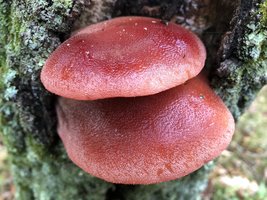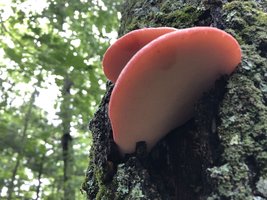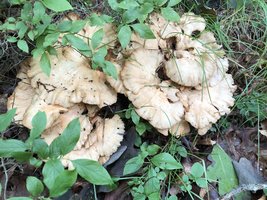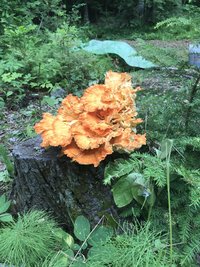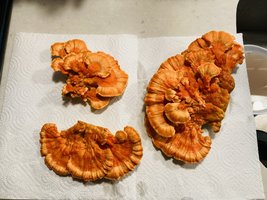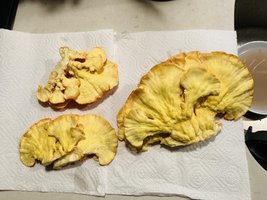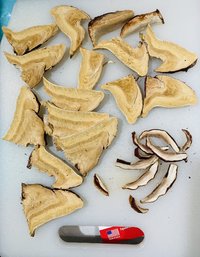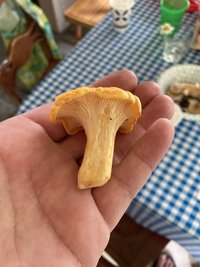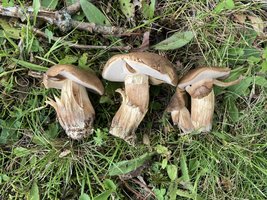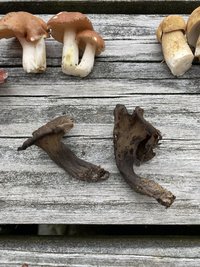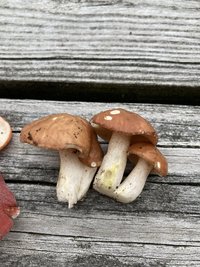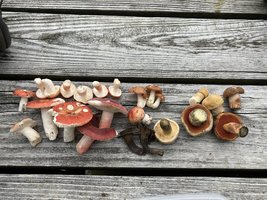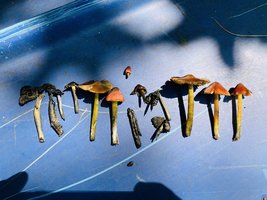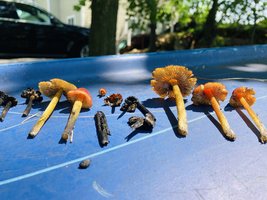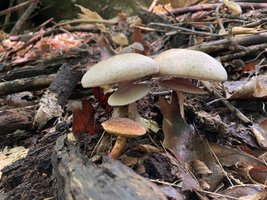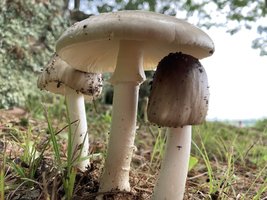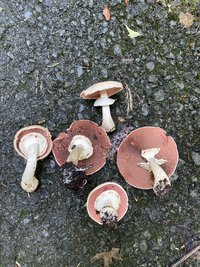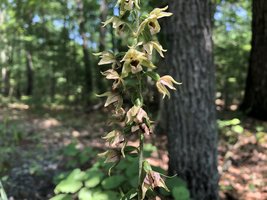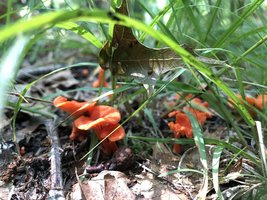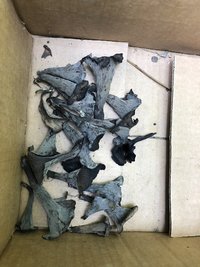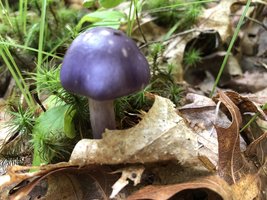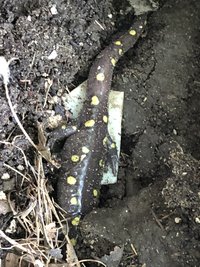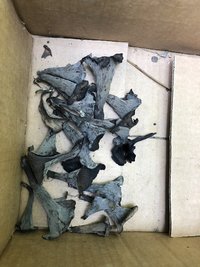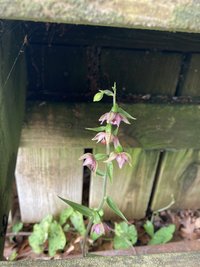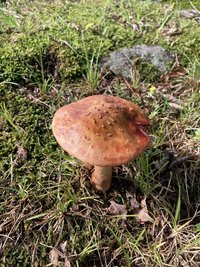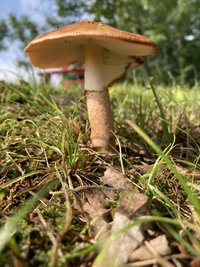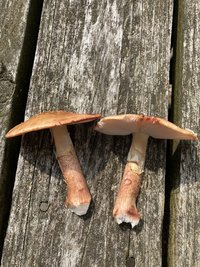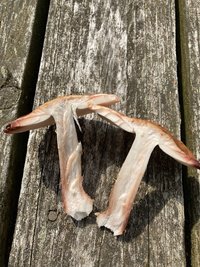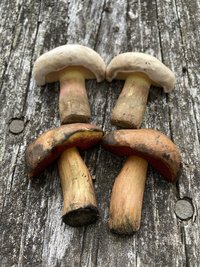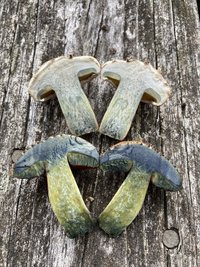Did you store those in a mixture of lime and distilled water?Mostly it's an experiment to see how we would store food in a SHTF situation. Our hens lay in winter but only due to artificial light helping keep them regulated and a steady diet of supplemental food.
In an isolation situation, we would want to save eggs in high production summer months in preparation of low winter production and the need to hatch more chicks in early spring.
On top of that food is always a great commodity for trading, and storing it is important if needed as a trading staple.
-
If you enjoy the forum please consider supporting it by signing up for a NES Membership The benefits pay for the membership many times over.
You are using an out of date browser. It may not display this or other websites correctly.
You should upgrade or use an alternative browser.
You should upgrade or use an alternative browser.
Homesteading Skills
- Thread starter Al-Jim19
- Start date
xtry51
NES Member
Did you store those in a mixture of lime and distilled water?
Tap water and pickling lime.
My laying hens have about 1 month to go before I start to see eggs. Looking forward to trying this technique.Tap water and pickling lime.
fshalor
NES Member
This.Fixing/maintaining your own tools and equipment.
Cutting your own firewood.
Building your out buildings.
Learn to weld
Learn to salvage and repurpose items.
Learn to compost in large quantity.
Learn how minimize soil erosion.
There's plenty of info on raising sheep and goats and the required space for each.
We looked at downsizing stuff, but the welders and tools will never be on the list.
If SHtF, our three small garden plots, plus the flower garden (would be converted to food generator) will come in handy.
People will still trade goods. Cars will still exist and need repair.
Plans include:
100 acres. Mix of farmland and wood lot for materials and game.
Build a still. (for trade, not consumption)
Have a local network who knows your skills and you compliment theirs.
Defensible positions.
At least one of each which runs on diesel: vehicle, Genset, tractor.
Setup ability to make biodiesel
200w minimum self power generation.
Well and cistern rain catch system.
Chickens, goats and maybe a pig.
- Joined
- Jul 31, 2019
- Messages
- 1,320
- Likes
- 2,820
Telltale chicken of the woods on an oak stump and a fine specimen! Harvest it and freeze a what you don’t eat. Eat in small portions to see how your body likes it. I love the stuff.I found these in Maine growing on the bottom of a tree. I thought they were chicken of the woods, can anyone confirm?
Seriously! I’ve seen some great variety so far and a very nice chick of the woods that is young and tender.It’s going to be a great year for mushrooms. I can’t believe how early this stuff is showing up. I just started picking early low bush blueberries.
View attachment 499212
Beefsteak!!!
View attachment 499213
The only one you can eat raw.
I also found this chicken of the woods. It’s a little tired, but it’s pretty early for this stuff.
View attachment 499214
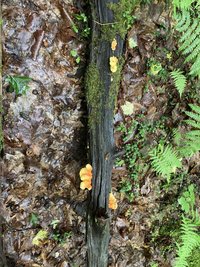
Red Belted Polypore! Fomitopsis Pinicola
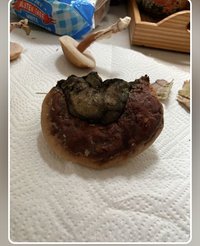
@Medicine Man
I’m on vacation for 2 weeks out of state and I’m curious as to whether I should harvest that chicken of the woods now or wait until end of this month. That picture above is about 1.5 weeks old and just 2 days I was there and it’s doubled in size. I just don’t want to miss this opportunity.
I’m on vacation for 2 weeks out of state and I’m curious as to whether I should harvest that chicken of the woods now or wait until end of this month. That picture above is about 1.5 weeks old and just 2 days I was there and it’s doubled in size. I just don’t want to miss this opportunity.
Okay so I decided to harvest some of it and it’s good I did. Being a smaller oak log the relative size of the laetiporus sulphureus would be minimal. These are gonna be delish.
View attachment 500038
View attachment 500039
Those should dry out nicely.
I wish I trusted myself to know the right ones to pick. I’d love to try that.Okay so I decided to harvest some of it and it’s good I did. Being a smaller oak log the relative size of the laetiporus sulphureus would be minimal. These are gonna be delish.
View attachment 500038
View attachment 500039
They are currently vacuumed sealed and freezing as we speak. I won’t get back to eating them until August. What I thaw out I will then decide whether to dry some out to rehydrate later in a soup or something but man do I love this coated in a mixture of flour/salt/pepper and fried in a cast iron pan!Those should dry out nicely.
Last edited:
This one is the most flamboyant fungi out there. It’s the best one to cut your teeth on.I wish I trusted myself to know the right ones to pick. I’d love to try that.
Just to add this: the pic of the log a few posts above was on 7/2 and I harvested them today on 7/7 so that will give you an idea of how much they grow over a 5 day period.
Last edited:
- Joined
- Jul 31, 2019
- Messages
- 1,320
- Likes
- 2,820
You did the right thing. I would have played it the same way. Two weeks is a long time in the mushroom world. Especially with choice mushrooms like that. We’re not the only ones eating this stuff.Okay so I decided to harvest some of it and it’s good I did. Being a smaller oak log the relative size of the laetiporus sulphureus would be minimal. These are gonna be delish.
View attachment 500038
View attachment 500039
They look fantastic.
- Joined
- Jul 31, 2019
- Messages
- 1,320
- Likes
- 2,820
You must live near a hemlock grove.Any idea on the best way to extract the benefits from the red belted polypore?
View attachment 500093
Generally, mushrooms are a little more difficult process than medicinal plants.
It’s a three step process.
Using fresh mushrooms.
First, slice the mushroom into strips. The smaller the better. Place strips in a jar and cover with straight grain alcohol. I use an organic grain alcohol that gets bootlegged to me, but ever clear works. MA has some screwy laws regarding grain alcohol so you may need to drive closer to the border to get it.
Cover the mushroom slices with the alcohol and let it sit for 24 hours.
Strain and put the alcohol aside.
Second step:
Take the marc or alcohol soaked mushroom pieces and decoct (simmer) them in water for 24 hours. The idea is to end up with the same amount of water decoction as alcohol. Keep simmering until they’re equal but at least 24 hours.
Step three:
Mix the alcohol, water, and marc into one jar, cover and let it sit for two weeks, gently shaking it every day. Strain and bottle. It’s now ready to use.
A word on alcohol.
Some medicine is easy to make. Pine needle tea couldn’t get simpler. Pour hot water over pine needles and let it sit for fifteen minutes. Drink.
Different solvents work differently and sometimes (like above) we use more than one. Some basic solvents are; water, alcohol, glycerin, heat, and even sugar.
When using alcohol, it is important to consider the water content of the herb. If you’re using dry material, you may need to add water to alcohol so it won’t destroy the compounds you’re looking to extract.
Mushrooms are generally processed wet. Alcohol will extract water as well as the compounds. Even using 190 proof grain alcohol in the above example will result in a final mixture about 120 proof.
This is important for a few reasons, but most importantly because it alters the efficacy of your extractions. We use grain alcohol because it’s as close to pure alcohol (200 proof) as we can get and can be made any proof dependent upon the water content of the herbs and additional water added.
Medicine making is as much an art as science. I believe a lot of the studies done on herbs often neglect this point. For example, some stuff needs to be processed in the field. Waiting to process it until you get home loses most of the medical benefits.
Comparing two medicines made from the same plant but processed differently will result in inconclusive results and is largely the reason information on herbs is all over the place. Pharmacy used to include medicine making. Not anymore.
ETA: Hi ATF and Maura, I’m joking about the bootlegging, please stand down.
Last edited:
Thank you so muchYou must live near a hemlock grove.
Generally, mushrooms are a little more difficult process than medicinal plants.
It’s a three step process.
Using fresh mushrooms.
First, slice the mushroom into strips. The smaller the better. Place strips in a jar and cover with straight grain alcohol. I use an organic grain alcohol that gets bootlegged to me, but ever clear works. MA has some screwy laws regarding grain alcohol so you may need to drive closer to the border to get it.
Cover the mushroom slices with the alcohol and let it sit for 24 hours.
Strain and put the alcohol aside.
Second step:
Take the marc or alcohol soaked mushroom pieces and decoct (simmer) them in water for 24 hours. The idea is to end up with the same amount of water decoction as alcohol. Keep simmering until they’re equal but at least 24 hours.
Step three:
Mix the alcohol, water, and marc into one jar, cover and let it sit for two weeks, gently shaking it every day. Strain and bottle. It’s now ready to use.
A word on alcohol.
Some medicine is easy to make. Pine needle tea couldn’t get simpler. Pour hot water over pine needles and let it sit for fifteen minutes. Drink.
Different solvents work differently and sometimes (like above) we use more than one. Some basic solvents are; water, alcohol, glycerin, heat, and even sugar.
When using alcohol, it is important to consider the water content of the herb. If you’re using dry material, you may need to add water to alcohol so it won’t destroy the compounds you’re looking to extract.
Mushrooms are generally processed wet. Alcohol will extract water as well as the compounds. Even using 190 proof grain alcohol in the above example will result in a final mixture about 120 proof.
This is important for a few reasons, but most importantly because it alters the efficacy of your extractions. We use grain alcohol because it’s as close to pure alcohol (200 proof) as we can get and can be made any proof dependent upon the water content of the herbs and additional water added.
Medicine making is as much an art as science. I believe a lot of the studies done on herbs often neglect this point. For example, some stuff needs to be processed in the field. Waiting to process it until you get home loses most of the medical benefits.
Comparing two medicines made from the same plant but processed differently will result in inconclusive results and is largely the reason information on herbs is all over the place. Pharmacy used to include medicine making. Not anymore.
- Joined
- Jul 31, 2019
- Messages
- 1,320
- Likes
- 2,820
In Europe there are plenty of books covering eatable mushrooms. Here I was told a first rule was to forget all I knew as similarly looking ones could be poisonous.Amanita rubescens “Blusher”
One of the very few edible Amanitas
View attachment 503250View attachment 503251View attachment 503252View attachment 503253
Are there any good books here covering what you know of those, ideally for our NE area?
Amazon product ASIN 1591935911View: https://www.amazon.com/Mushrooms-Northeast-Simple-Common-Mushroom/dp/1591935911/ref=asc_df_1591935911_nodl/?tag=hyprod-20&linkCode=df0&hvadid=312165853622&hvpos=&hvnetw=g&hvrand=437299275189512906&hvpone=&hvptwo=&hvqmt=&hvdev=m&hvdvcmdl=&hvlocint=&hvlocphy=21167&hvtargid=pla-587198368772&psc=1&tag=&ref=&adgrpid=60258872297&hvpone=&hvptwo=&hvadid=312165853622&hvpos=&hvnetw=g&hvrand=437299275189512906&hvqmt=&hvdev=m&hvdvcmdl=&hvlocint=&hvlocphy=21167&hvtargid=pla-587198368772In Europe there are plenty of books covering eatable mushrooms. Here I was told a first rule was to forget all I knew as similarly looking ones could be poisonous.
Are there any good books here covering what you know of those, ideally for our NE area?
xtry51
NES Member
Blueberries and Blackberries are doing very well in a fairly pour soil condition. We planted last spring and the blackberries have already created half a dozen new runner/sprouts. This surprised me after only one year and we do zero fertilization or watering. We started picking fully ripened berries last week.
I'm going to plant more of these and try to line the entire driveway eventually. They are currently fenced in to protect them from deer until I feel they have spread out enough.
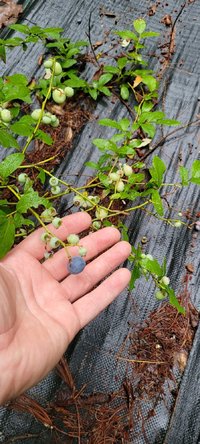
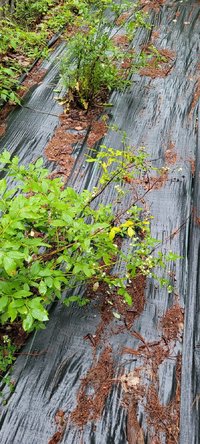
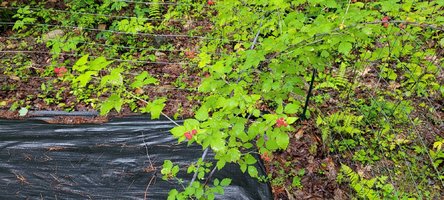
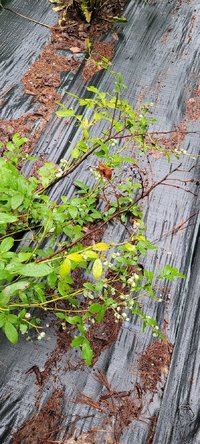
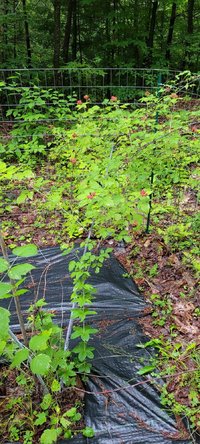
I'm going to plant more of these and try to line the entire driveway eventually. They are currently fenced in to protect them from deer until I feel they have spread out enough.





Looks like the soil is not an issue at all. If I was a deer I’d be all over those.Blueberries and Blackberries are doing very well in a fairly pour soil condition. We planted last spring and the blackberries have already created half a dozen new runner/sprouts. This surprised me after only one year and we do zero fertilization or watering. We started picking fully ripened berries last week.
I'm going to plant more of these and try to line the entire driveway eventually. They are currently fenced in to protect them from deer until I feel they have spread out enough.
View attachment 503360View attachment 503361View attachment 503362View attachment 503363View attachment 503364
- Joined
- Jul 31, 2019
- Messages
- 1,320
- Likes
- 2,820
Sometimes we walk the same path.Looks like we found a similar helleborine in an inconspicuous spot
Last edited:
Share:

